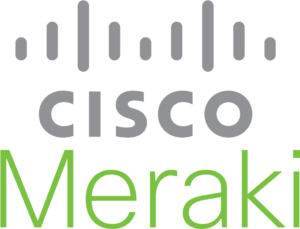
The Cisco Meraki Experience
The Cisco Meraki Experience
Back in 2018 we had to design and build out the infrastructure for a Clients new office. They were moving from a Leased Office with Managed Infrastructure to a bigger office and their own Infrastructure.
They were moving for 2 reasons; the first and biggest being that they were simply out-growing the space. The landlord was unable to accommodate the rate at which they were consuming desks. The second reason (and actually the first in terms of timeline) was the fact that the landlord was quite simply terrible at keeping their Managed Infrastructure up to date.
This particular Client sells Security-as-a-Service, therefore it is somewhat reasonable for one of their customers to assume that they are pretty much on top of their game. However, as luck would have it, one of the Clients customers did some kind of due diligence which included sending someone to the office, connect to the network and see if there were any vulnerabilities, of which, that landlords inability to maintain their infrastructure indicated un-patched wireless access points. My Client approached the landlord, requesting urgent action on their part, the landlord simply refused.
The landlord claimed that an upgrade or any significant Network Maintenance would have disrupted the whole building affecting many customers. Getting multiple customers to agree to the same downtime was fairly difficult for the landlord, so the landlord simply chose the path of least resistance; Do Nothing.
So my role with the Client was to use my background in Networking, to design, build and manage (temporarily) a network.
I needed something that would allow them to Scale, an Enterprise class product, a modern UI probably something that could be managed via a GUI, preferably web based.
Initially I compared Ubiqiti, Aruba and Cisco Meraki. I found getting a supplier in the UK to provide a full Ubiqiti offering to be more challenging than it should be. They are a pretty decent option for the Home, but I was unable to get any serious traction from UK suppliers and therefore dropped them fairly quickly.
The leading contender for me was the Aruba Wireless, of which I’m a big fan. I felt and continue to feel that this was significantly more feature rich than the legacy Cisco offering.
The only weakness for the Aruba solution at the time was that they don’t (or didn’t) have a firewall offering and the Client wanted to be single-vendor for the Network.

The Cisco Meraki offering was a close second to the Aruba offering. The benefits included; a Single Dashboard for all devices, simple troubleshooting tools, included telephone support and hardware cover. The UI is a web based dashboard that seems to deliver all of the top level things you might want.
When it came down to making a final decision, that web based dashboard meant we could support the office from anywhere in the world if we really needed to, as well as excellent telephone support, combined with a single dashboard for the entire network meant Cisco Meraki won the business.
The equipment was ordered, delivered and installed as per my design. A couple of issues popped up, especially in the early days, I called support and was blown away by just how good they are, how quick they are at not only getting you to the best person for the job, but getting the problem fixed. The support is so good that my default response is now to just throw the problem over to Meraki and they do not fail to deliver! The best thing about this, for the Client, is that they don’t need a Network Specialist on staff, an IT Generalist or even an Operations Analyst can do a little basic work and then call Support if needed.
